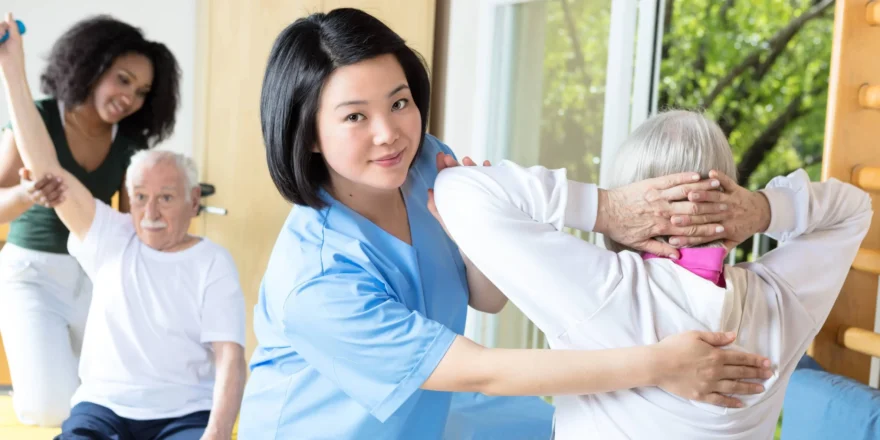A stroke can be scary to think about, especially if you know someone who’s been affected by it or are worried that it might affect you or someone you love in the future. But, there are plenty of things you can do to keep your stroke risk low and recover from stroke if it does happen to occur. In this guide, we’ll cover everything you need to know about stroke and its treatment. If you ever need treatment for a Stroke condition, call +971 50 2785990 Shifa Healthcare Team for further assistance.
What Is A Stroke?
A stroke occurs when there is a lack of oxygen in the brain. This deprives the brain of its required nutrients and can cause irreparable damage if not treated as soon as possible. The two main types of strokes are ischemic, where a clot blocks blood flow, and hemorrhagic, which is caused by bleeding in or around the brain.
re are different treatments for each type of stroke: surgery for an ischemic stroke, clot-busting drugs for an ischemic stroke, and hospitalization for a hemorrhagic stroke.
What Symptoms Do I Need To Look Out For?
Some common symptoms of stroke include dizziness, weakness on one side of the body, slurred speech, difficulty speaking, confusion, seizures, and loss of vision in one or both eyes. These symptoms typically last less than five minutes but indicate that someone has had a stroke and needs immediate medical attention.
Anyone who notices these signs should be taken to the doctor immediately. Most strokes are treatable with medication and other noninvasive methods. However, if any symptom lasts more than 30 minutes or the person loses consciousness then it is best to go straight to the emergency room.
It’s important to know your risk factors for having a stroke so you can take steps towards prevention. One major risk factor includes high blood pressure, so doctors recommend maintaining a healthy weight, exercising routine, moderating alcohol consumption, and quitting smoking altogether.
How Do You Know If Someone Had A Stroke?
There are several signs that a person might be suffering from a stroke. These include sudden numbness or weakness of the face, arm, or leg, especially on one side of the body; sudden confusion, trouble speaking or understanding speech; sudden trouble seeing in one or both eyes; sudden trouble walking, dizziness, loss of balance, or coordination; and sudden severe headache
with no known cause.
Strokes can be very serious and even fatal if not treated quickly by a medical professional so it is important not to wait for symptoms to worsen before seeking help. A stroke is caused by an interruption of blood flow to the brain which deprives brain cells of oxygen and nutrients, leading them to die within minutes. The two most common types of strokes are ischemic and hemorrhagic.
Ischemic strokes, more common than hemorrhagic strokes, account for approximately 87% of all strokes. They typically result when a clot blocks an artery supplying the brain with blood and thus deprives parts of the brain of needed oxygen.
Hemorrhagic strokes occur when there is bleeding into or around the brain and can result in large hematomas forming outside the skull or inside the brain itself due to tearing (rupturing) small arteries.
How Is Stroke Treated?
After being evaluated at the hospital, you will need treatment for your stroke. Stroke treatment depends on how severe your symptoms were when they first started, what type of treatment you’ve had before (if any), and whether there’s been any damage to specific parts of your brain.
Stroke Rehabilitation with Physiotherapy: Muscle Strengthening, Gait Training, Balance and Coordination
Stroke rehabilitation with physiotherapy aims to reduce and manage the after-effects of stroke, especially problems with balance and mobility. Physiotherapy can achieve this through various methods including muscle strengthening, gait training, and balance and coordination exercise.
Muscle Strengthening
A physiotherapist will work to strengthen the muscles of your affected arm or leg by having you use them in a specific way. They’ll instruct you on how to do exercises that specifically target the muscle they’re trying to work on, such as using a machine or moving your body in a certain way.
You’ll do these exercises for many weeks before trying to use the arm or leg again. Your goal is to build up strength so it can handle everyday tasks like brushing your teeth, holding a cup of coffee, or taking out the garbage.
It’s also important to exercise other parts of your body too – not just the arm or leg that was injured. For example, if you had a stroke in one hand, then make sure to include exercises for both hands when doing physical therapy.
Gait Training
The goal of gait training is to improve the patient’s mobility. They must maintain a straight posture while walking, as well as have their arms swing in the same direction as their feet.
The therapist will teach the patient how to walk on different surfaces (carpet, grass), up and down stairs and hills. They will also be trained on how to navigate curbs and steps.
All this training is done gradually so the patients can work on all aspects of walking at their own pace. Walking is not just about getting from point A to point B; it’s about staying fit and healthy for life.
Balance And Coordination
Balance is essential for both daily living and sports. When balance is compromised, there is an increased risk of falls. This increases the risk of injury from falls, as well as decreased mobility to avoid falling.
Poor balance also decreases confidence in performing tasks like climbing stairs or walking over uneven terrain. To improve balance, physiotherapists focus on postural control exercises that can be done either by sitting down or standing up.
These exercises involve alternating shifting weight back and forth between legs to promote equal use of muscles on each side of the body.
Conclusion
Although stroke rehabilitation is a challenging process, it is not impossible. Physiotherapy has helped many stroke survivors to recover. From muscle strengthening to gait training to balance and coordination exercises, many techniques help people regain what they lost in their brain injury. The most important thing that a therapist can do for a stroke survivor is provided hope for the future.
Call Shifa Healthcare If You Need Help with a Stroke rehabilitation
For stroke, Shifa Healthcare has the best rehabilitation services. If you or your family or friend are dealing with post-stroke symptoms, take immediate action by calling us at +971 50 2785990. We are available 24×7 for your assistance. Our homecare team is highly trained in all aspects of treatment needed at home, They will do their best to help you improve the condition




